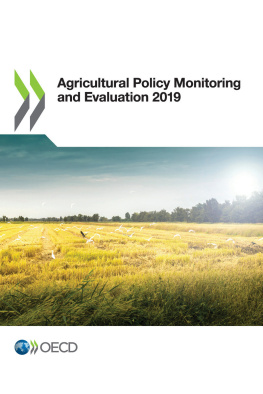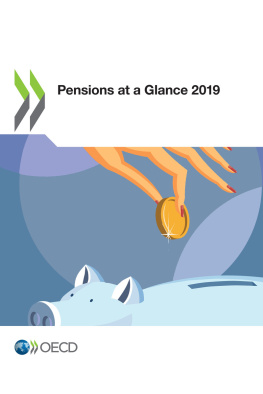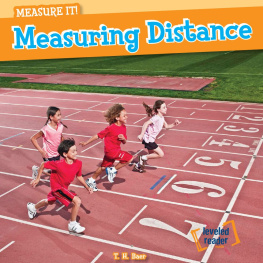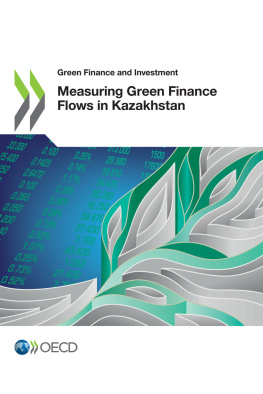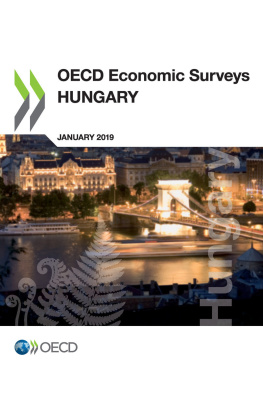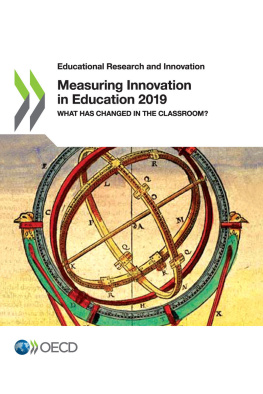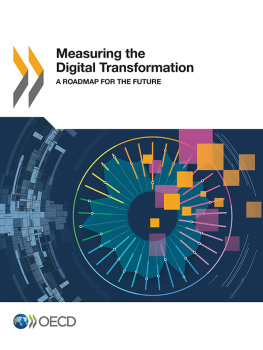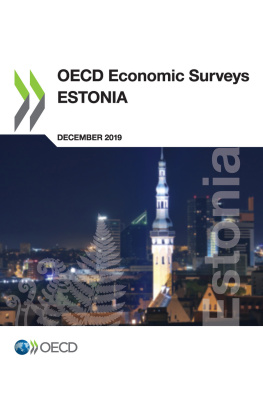OECD - Measuring Distance to the SDG Targets 2019
Here you can read online OECD - Measuring Distance to the SDG Targets 2019 full text of the book (entire story) in english for free. Download pdf and epub, get meaning, cover and reviews about this ebook. year: 2019, publisher: OECD Publishing, genre: Politics. Description of the work, (preface) as well as reviews are available. Best literature library LitArk.com created for fans of good reading and offers a wide selection of genres:
Romance novel
Science fiction
Adventure
Detective
Science
History
Home and family
Prose
Art
Politics
Computer
Non-fiction
Religion
Business
Children
Humor
Choose a favorite category and find really read worthwhile books. Enjoy immersion in the world of imagination, feel the emotions of the characters or learn something new for yourself, make an fascinating discovery.
Measuring Distance to the SDG Targets 2019: summary, description and annotation
We offer to read an annotation, description, summary or preface (depends on what the author of the book "Measuring Distance to the SDG Targets 2019" wrote himself). If you haven't found the necessary information about the book — write in the comments, we will try to find it.
OECD: author's other books
Who wrote Measuring Distance to the SDG Targets 2019? Find out the surname, the name of the author of the book and a list of all author's works by series.
Measuring Distance to the SDG Targets 2019 — read online for free the complete book (whole text) full work
Below is the text of the book, divided by pages. System saving the place of the last page read, allows you to conveniently read the book "Measuring Distance to the SDG Targets 2019" online for free, without having to search again every time where you left off. Put a bookmark, and you can go to the page where you finished reading at any time.
Font size:
Interval:
Bookmark:
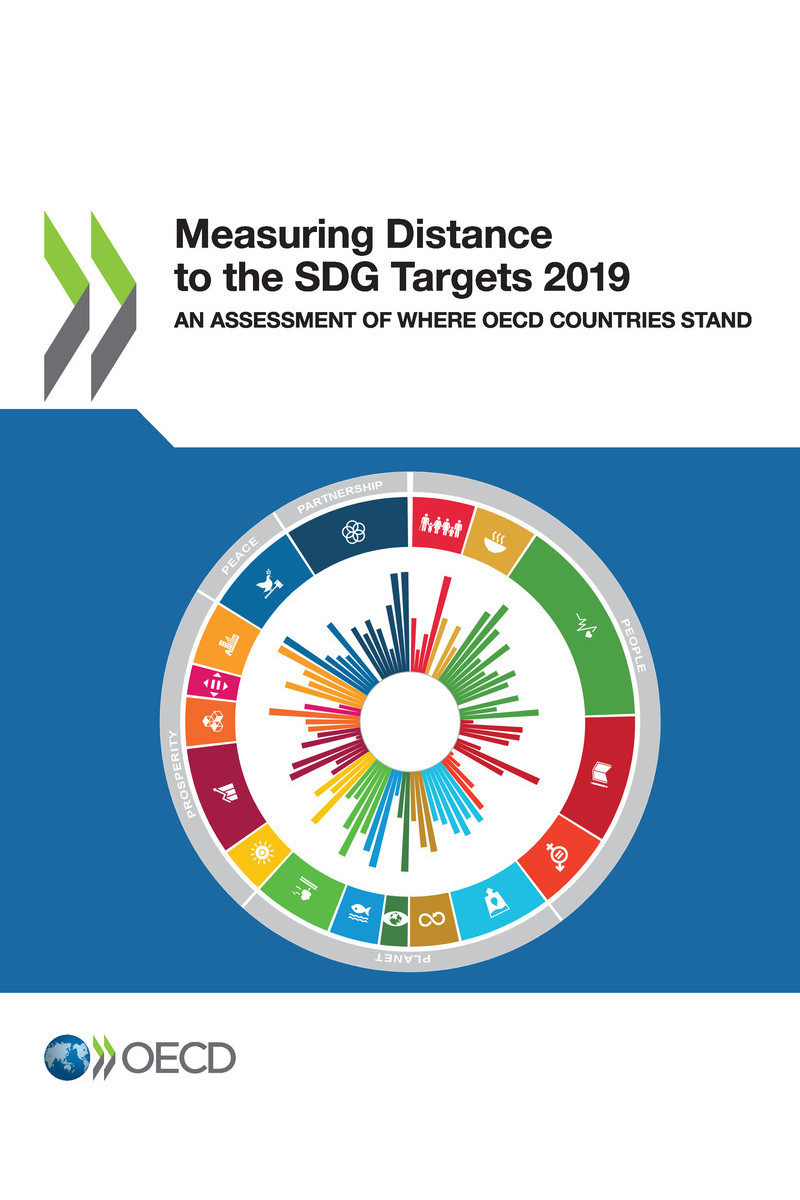
OECD (2019), Measuring Distance to the SDG Targets 2019: An Assessment of Where OECD Countries Stand , OECD Publishing, Paris, https://doi.org/10.1787/a8caf3fa-en .
The 2030 Agenda for Sustainable Development, adopted by world leaders at the United Nations on 25 September 2015, is a broad and ambitious plan of action for people, planet and prosperity, with the overarching objective of leaving no one behind. At its core are 17 Sustainable Development Goals (SDGs) and 169 targets.
The OECD is fully committed to supporting the achievement of the SDGs. This commitment is underscored by the OECD Action Plan on the SDGs, endorsed by the OECD Council in December 2016. The Action Plan describes how the OECD will support the 2030 Agenda through its legal instruments, its expertise in policy analysis and its know-how on statistics, indicators and systems for monitoring performance. As part of this extensive plan, the OECD Statistics and Data Directorate developed a unique methodology for measuring the distance that OECD countries would need to travel in order to meet the SDG targets.
This Study, Measuring Distance to the SDG Targets 2019: An Assessment of Where OECD Countries Stand is closely aligned with the UN Global Indicator List for the SDGs , and, wherever possible, reflects the level of ambition agreed by Member States when setting the 2030 Agenda. It was first released as a pilot study in 2016; following feedback from OECD member countries and work to expand indicator and country coverage, a revised and expanded version was published in June 2017.
This 2019 edition of the Study further expands the indicator, target and country coverage. It also presents some preliminary evidence on how these indicators have changed over time as well as on the transboundary aspects embodied in the Agenda. An earlier version of this Study was presented to the OECD Council on the 2030 Agenda for Sustainable Development in March 2019.
The SDGs are our promise and our responsibility to future generations. They present a unique opportunity for countries to work together to achieve a more inclusive and sustainable future for all. In this respect, the OECD, through its expertise on policy and data, is assisting several countries in their efforts to implement the SDGs. This Study aims to further support member countries in their priority setting, assessment and monitoring towards the achievement of the 2030 Agenda.

Angel Gurra
OECD Secretary-General
This Study was prepared by Guillaume Cohen, Aneta Haimannova, at the time on secondment from the Czech Republic, and Michal Shinwell, from the Household Statistics and Progress Measurement Division of the OECD Statistics and Data Directorate. It has benefitted from comments from Carrie Exton, Marco Mira dErcole, Simon Scott and Martine Durand, from the OECD Statistics and Data Directorate; from national delegates to the OECD Committee on Statistics and Statistical Policy; and from several colleagues across the OECD on the indicators and methodology of the Study. Anne-Lise Faron prepared the Study for publication, Sonia Primot provided support on the visualisations and Martine Zada advised on aspects related to communications. Finally, the authors wish to thank for their insights a number of experts in the field: Sami Pirkkala, Sustainable Development and the 2030 Agenda, Strategy Department of the Prime Ministers Office, Finland; Amit Yagur-Kroll, Well-Being and Sustainability Indicators, and Cross-Sectional Statistical Products, Media Relations and Communications Department, Office of the National Statistician, Israel; Mateusz Wyykowski, Statistical Products Department, Statistics Poland; Alain Henry, Task Force Sustainable Development, Federal Planning Bureau, Belgium; Eleanor Melanson, International Cooperation and Corporate Statistical Methods Division, Statistics Canada; and Lieneke Hoeksma, Statistical researcher SDGs, Statistics Netherlands.
With eleven years left to achieve the ambitious goals of the 2030 Agenda, how close are OECD countries to reaching the SDGs? And how is our understanding constrained by targets and indicators that still cannot be measured? The OECD Measuring Distance to the SDG Targets Study aims to help member countries assess where they stand now and to identify the areas where additional effort is required in order to achieve the goals. It also sets out the statistical agenda showing how much we do not yet know, and how this might impact both the achievement of the SDGs, and decisions about what to prioritise across this vast agenda. The methodology underlying the Study also provides a way for OECD countries to understand their SDG achievements and challenges in a comparative context.
Font size:
Interval:
Bookmark:
Similar books «Measuring Distance to the SDG Targets 2019»
Look at similar books to Measuring Distance to the SDG Targets 2019. We have selected literature similar in name and meaning in the hope of providing readers with more options to find new, interesting, not yet read works.
Discussion, reviews of the book Measuring Distance to the SDG Targets 2019 and just readers' own opinions. Leave your comments, write what you think about the work, its meaning or the main characters. Specify what exactly you liked and what you didn't like, and why you think so.




